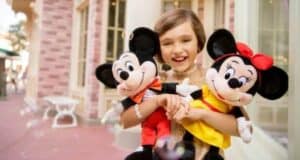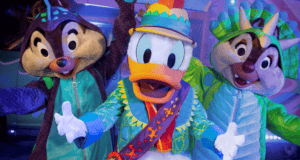
One of the most notable attributes shared by many of Disney protagonists across the board is their tendency toward originality. More often than not, Disney’s most beloved characters have been known to wield defining personality traits that separate them from the everyday confines of convention. Then there are others that stand out for other unique qualities of a more physical nature, often beyond all control. One constant that remains, however, is the fact that iconic Disney characters tend be embraced most off all for such differences. From callouts to one’s physical appearance to feeling like an outcast for breaking from stereotypes and cultural norms, from being blessed (or cursed) with supernatural abilities to living amongst another species just trying to fit in, here’s a look at some of Disney’s most loveable oddballs.
20. Quasimodo
This protagonist from Disney’s 1996 animated film The Hunchback of Notre Dame deviates from most other primary Disney characters in the fact that he is not very attractive looking physically. As the title alludes, he is a deformed hunchback living in the shadows Notre Dame’s highest cathedral where he is tasked with the faithful duty of ringing the bells. Despite his rather gruesome exterior, Quasimodo exudes a kindhearted and benevolent disposition, eventually earning himself a couple of close friends, many of whom also have their own set misfit quirks. As a fellow pariah in regards to Parisian social norms, this is one of the reasons why the Gypsy Esmeralda is drawn to him in friendship and able to relate so readily on accounts of feeling unaccepted and wrongfully rejected by society.
19. Dumbo
Quasimodo wasn’t Disney’s first primary protagonist to sport a “grotesque” deformity. That honor goes to Dumbo, star of the 1941 animated feature film of the same name, which was remade into a live-action installment back in 2019. Born with abnormally oversized ears, this baby elephant stands out immediately for the obvious aforesaid traits. But he soon soars to new heights in fame, quite literally, when it is discovered that his abnormality allows him to fly through the air as well. In conclusion, large ears on an elephant may be enough of an attention draw on its own, but add the ability to fly into the mix and the situation becomes undeniably anomalous.

18. Peter Pan
Competing on the same level of peculiarity as a big-eared flying elephant is the equally odd account of an un-aging boy who can also fly. We know him best as Peter Pan—J.M. Barrie’s title character who has been adapted countless times over the years through various stage and film productions. Disney’s most renowned adaptations thus far include the original 1953 animated feature film and the 2003 live-action installment. There is also a highly anticipated live-action retelling of the original 1953 classic currently in the works for 2021! All in all, the strange fact remains that Peter Pan is a boy who never grows up and is able to fly through the air via fairy dust and by thinking happy thoughts that literally “uplift” him. Nothing about that can be considered normal by any account.
Bonus Tip!
BONUS TIP: Consider planning and booking your next Disney trip with an Authorized Disney Vacation Planner you can trust like Mickey Travels. They’ll help you get the best Disney travel deal, share expert advice and their services are totally FREE! It’s genius! Discover More >
17. Mary Poppins
Dumbo and Peter aren’t Disney’s only unexpected flyers. That beloved caretaker Mary Poppins may be “practically perfect in everyway,” but this just makes her practically peculiar in everyway as well. People are not supposed to be perfect or even “practically perfect.” It’s through flaws, quirks, and misfit troubles that we are drawn to some of Disney’s best-loved characters. On that note, given the fact that Mary Poppins doesn’t rely on such tactics, we can conclude that her biggest quirk is her flawlessness. Furthermore, we can also acknowledge that a grown woman who is living in a rigid, unimaginative “adult world” yet maintains the ability to fly through the air via parasol and transcend into two-dimensional cartoon worlds isn’t exactly keeping with society’s norms. While there are secondary oddball characters to consider in both the original 1964 feature film and its 2018 sequel, the title character remains perhaps the most unusual for all the aforementioned observations.
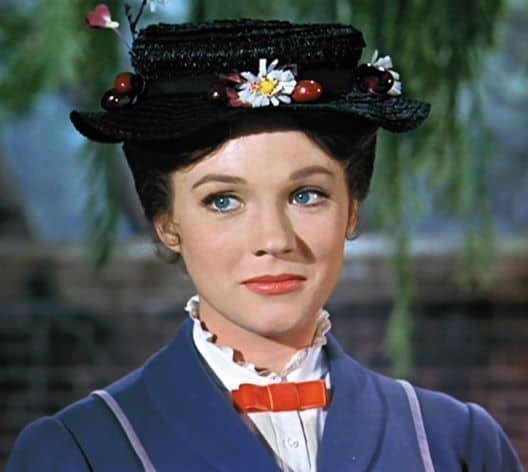
16. Pinocchio
Throughout its history, Disney has been known for personifying countless inhuman characters, whether they be anamorphic animals, other talking creatures of animal or supernatural origin, and even interactive otherwise inanimate objects. As we’ve come to expect such representations as normal regarding Disney standards, you may think it’s unfair to single out a talking puppet as being an oddball. But what makes Pinocchio so unique is really his endeavoring to break free from being a puppet in favor of becoming a real human boy. Many of his struggles with fitting in, questions of the conscience, and other emotions do straddle the world of humanity versus inhuman instincts. So really, Pinocchio’s longing for freedom from confining puppet strings can be taken both literally as well as metaphorically. Either way, it goes against convention.
15. Ralph
Being a good guy in a Disney movie is only considered bizarre if your entire reason for existing in the first place is to be the bad guy. That’s the biggest dilemma Ralph faces in Disney’s 3D computer-animated feature-length film, Wreck-It Ralph, from 2012. He’s supposed to be a “wrecker”—a villain in an arcade game, for all intents and purposes. But Ralph is really a gentle giant with a kind heart, and is unsatisfied by his unjustly vilified plight. While the 2018 sequel finds Ralph better adjusted to accepting who he is on the inside, rather than letting a “day job” define him, the second installment focuses on secondary protagonist and Ralph’s best friend Vanellope and her own dissatisfaction with everyday life and the mundane, boring standards she wishes to break free from.
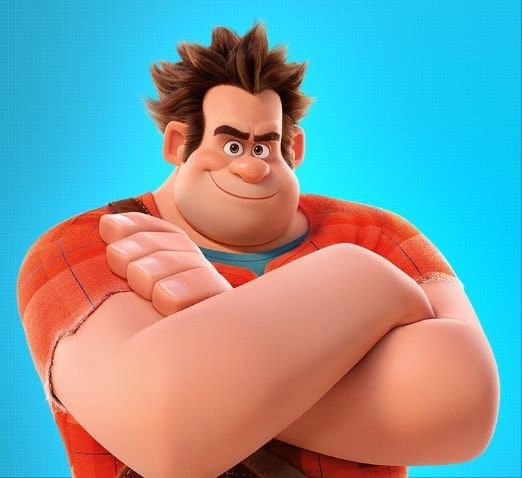
14. Remy
We next go from a wrecker looking to restore a wrecked reputation to a rat who wants to be a great chef. This desire is neither normal nor feasible in a profession that literally shuns the idea of rodents in the kitchen, even if they happen to be masterminds at producing culinary marvels. That’s why Remy, the leading rat protagonist in Disney’s 2007 computer-animated Ratatouille ultimately teams up with human ally and credited alias Linguini. Linguini is a bit of an outcast in the Parisian restaurant scene himself, first working as a lower-ranking garbage boy before earning praise for Remy’s kitchen mastery. Remy, however, spends the majority of the film feeling like a pariah who is neither welcome in the kitchens of Paris nor his former rat pack, which looks at his irrational dreaming as traitorous to the species.
13. Judy Hopps
Keeping with the theme of leading animal characters acting out of species, the motivational message in Disney’s computer-animated 2016 hit Zootopia is clear—“In Zootopia, anyone can be anything.” But despite a now unified anamorphic world in which former predator/prey instinctual divisions have been laid to rest, this is still a controversial issue to digest. This is especially true for Judy Hopps, one of the film’s co-protagonists, who looks to overcome all odds as the police force’s only bunny cop. Despite lifelong discouragement, Judy’s strong will, motivation, and determination have at last paid off as she gets to live her dream for being a cop. But despite it all, she’s landed with parking duty when she knows she’s cut out for more serious work, such as solving missing mammals cases. On the flip side the film’s other key player, Nick Wilde, does his best at living up to sly fox stereotypes, even if he is so much more than that on the inside.

12. Mulan
Mulan finds herself in much the same predicament as Judy Hopps in longing to break free from society’s expectations about who you should be based on what you were born as. While several key differences separate the original animated 1998 film from the live-action 2020 adaptation, both story arcs maintain the same commonalities in which the title character finds herself living an unfulfilled and divided existence, struggling with her shortcomings in being able to bring honor to her family by adhering to what is expected of her—making a suitable match in marriage and being a dutiful daughter. But her desire to do what’s arguably an even greater honor, saving her father from going off to battle in what is certain to be a death sentence, is misconstrued as an act of bringing shame rather than honor. Defying all social norms, Mulan allows what is morally right in her heart to guide her rather than society’s limited standards on what a woman’s duties should be. Some can even say she crosses the line in ways no other female Disney protagonist has ever done in that she even disguises herself as a man and actively fights in a war.
11. Merida
Mulan may have been the first female protagonist to pave the way for more warrior-centric tactics and battle knowhow in Disney films, but she certainly wasn’t the last. Merida, from Disney·Pixar’s 2012 computer-animated hit Brave, certainly sets a whole slew of new standards. In many ways, Merida is the ultimate game-changer Disney Princess. While she doesn’t impersonate a male counterpart or actually go into any battles, she does deviate from previously held ladylike Disney heroine standards by being a tomboy with skills in archery that can best any of her male peers. And while thus far in Disney film plots a happily ever after marriage with a dreamy prince has been hailed as the ultimate dream come true, Merida stands firmly in her denouncement for any such institutional desires, breaking with tradition on this level as well. On a lesser note, Disney Princesses for the most part are almost always denied having a prominent mother figure. Merida, on the other hand, is one of the first to not only have a mother, but one who has a dominating relationship with her mother—a fact that plays a major purpose in the primary plot for Brave.
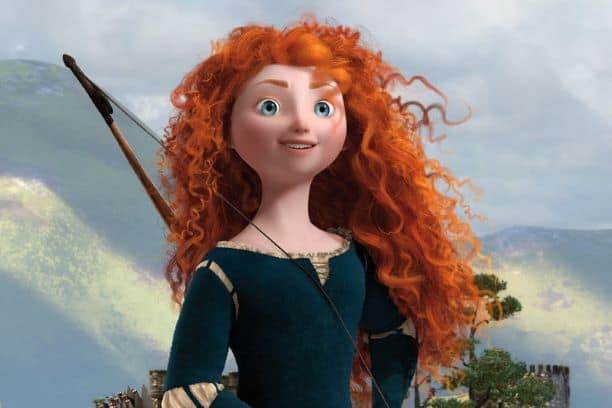
10. Rapunzel
Given her upbringing—being locked in a tower most of her life, having magical hair, and living a kidnapped existence with a witchy woman she thought was a doting mother, Rapunzel from Disney’s 2010 computer-animated hit Tangled is actually a pretty level-headed protagonist. In fact, she does remarkably well given all the above circumstances that would otherwise impede on a normal existence. But the fact remains that having long magical hair that spans more than 70 feet in length is by no means normal. She can’t really help the fact that her real mother ate a magical flower while giving birth to her, which contributed to this. All the same, such actions did largely set into course the chain reaction of reasons for why Rapunzel was destined to not fit in, and the primary motive for why she was abducted by the witch in the first place.
9. Belle
Perhaps it is a bit unfair to call Belle from Disney’s Beauty and the Beast odd. But in the 1992 animated version as well as the live-action remake from 2017, there is that classic opening song that drives home the fact that Belle just doesn’t fit into the mold of poor provincial life. As a book-loving female in a time and place where both are taboo, Belle shows she is ahead of her time. By today’s norms neither of those facts would be counted adversely against her. In fact, given the company she finds herself in throughout the course of the movie—a loving but unconventional father, a narrow-minded small town, and then a castle inhabited by enchanted creatures and objects once human but no longer considered such, Belle is arguably the only normal character in the whole story. Okay, sure, perhaps falling in love with a beast while shunning the stereotypical celebrity man is undeniably unconventional, but the fact remains that Belle’s true strangeness lies in the idea that she is the only one who isn’t strange in what is an absolutely bizarre situation.
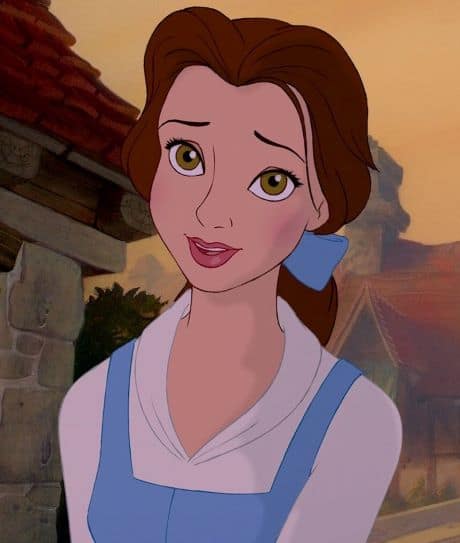
8. Tarzan
Like Belle, Tarzan finds himself vastly outnumbered in a world where a largely inhuman ensemble dominates. In Disney’s 1999 animated film adaptation we get to learn the backstory as well as observe the life the title character has led, starting with his parents’ shipwreck and passing, and his rearing by an ape as a result of his orphaned plight. Despite his best efforts in simian assimilation, you really can’t blame Tarzan for not fitting into a world in which he originally was not intended for. It’s in his nature as a different species to feel that he doesn’t fit in the same way. And then when “strangers like [him]” come into the only world he’s ever known, his internal upheaval and identity crisis are all understandably normal reactions. So for all intents and purposes, Tarzan’s oddities are all completely normal given the abnormal circumstances he is not in control of.
7. Mowgli
This “man-cub” protagonist of Disney’s The Jungle Book finds himself in a comparable dilemma to Tarzan. Both were orphaned human babies who grew up in the wild to be raised by surrogate animal families and remain locked indefinitely in the battle between nature versus nurture. But unlike Tarzan, Mowgli does have an awareness that there are those of his own species living not so very far removed from the life he’s grown up comfortably in. While final outcomes do take a slight deviation regarding the 1967 animated version as opposed to the live-action remake from 2016, the standing fact remains that for most of the film Mowgli stays firm in his desire to remain in his current state, rejecting the very institution of man (and the natural instincts that come with the species). He repeatedly denounces those differences specific to his species in a quest to fully embrace and adopt those that are naturally occurring in the wolf pack he has been reared by. In conclusion, Mowgli willingly rejects the normality of his own genetic makeup in favor of that which is not naturally occurring in a true demonstration of non-conformism.

6. The Incredibles
Even living as a human in a world alongside other humans can feel a bit ostracizing, especially if one happens to have superpowers at a time when using such abilities is illegal. That’s the dilemma posed in the plot of Disney·Pixar’s The Incredibles. This computer-animated film from 2004, along with its 2018 sequel, follows the well-intentioned orderly lives of a family of superheroes endeavoring to survive in permanent civilian form, carefully hindering those super abilities that call them out from the natural order of society and every day life. While each film’s unique story arc covers vastly different motivational motifs, the same callouts exist in both—largely that of being different from the common everyday man. While not at first recognized on a fully inclusive level, every member of the protagonist family has the same struggles—adapting to life with superpowers and trying to fit into a world where you are not the norm.
5. Pete (Pete’s Dragon)
Being unable to confirm to normal, everyday life can take on many forms, including that of an “imaginary” dragon that only you can see. That’s the dilemma for young Pete in Disney’s Pete’s Dragon. While the combination live-action/animation original from 1977 differs greatly from the reimagined live-action remake of 2016, key elements of consistency in both stories remain intact. Both themes focus on Pete, a young orphaned boy with a pet dragon that only he is seeing for much of the film. While done differently, each plot draws into question the reality of whether or not Pete’s dragon may in fact be real due to questionable evidence left behind by the said crypto creature. So, while feeling orphaned and alone may be enough on its own to make one feel bitterly singled out, adding a dragon into the mix and the question of lunacy does double in defining deviation.

4. Lilo and Stitch
Like Pete, Lilo knows what it feels like not to fit in. While she has her own set of eccentricities and character quirks (like the superstitious belief of being able to control the weather by feeding a peanut butter sandwich to a fish every Thursday) she too lives an estranged orphaned life, despite having an adult sister who looks out for her. What’s more, just like Pete, her best friend is not of human origin—or even of natural animal origin, to say the least. Stitch, like Pete’s dragon Elliot, is an anomaly and equal star to the film. Together, he and Lilo are two peas in a very odd pod.
3. Moana
Lilo isn’t the only non-conforming protagonist living the island life. As the daughter of her village’s chief and implied future leader of the people, the title teenage protagonist in Disney’s 2016 3D computer-animated film Moana knows firsthand what it’s like to feel conflicted with herself about doing the right thing versus what is expected of her. Even at a young age it is suggested that her destiny is calling for her to break free from the confines of land and seek out a solution for her island’s fate. Against her father’s forbiddance, she sets out applying the same voyager tactics that initially brought the first inhabitants to the island. Her goal? Find the demigod Maui and get him to return the heart Te Fiti (which he stole, triggering the response for her island’s past and current plight). From her innately one-of-a-kind nature to her prevailing courage to do what needs to be done even when it goes against the grain (or in this case, against the current) Moana proves to be an original, but in a very good way. She isn’t the only deviant in the film, however. Her grandmother—the village “crazy lady” plays a secondary oddball role not unlike Maurice in Beauty and the Beast. Then there’s Maui. A demigod is already granted to be abnormal, but when we learn of his own backstory we can’t help feeling sorry for the rejection he’s only ever known his entire life.

2. Hercules
Maui wasn’t the first god/demigod to be featured in a Disney animated film. Back in 1997 Disney’s Hercules took on an entire theme surrounding the general idea of such. Superhuman strength singles out the title character, even in his youth, enforcing thoughts and feelings of not fitting in and being a freak of nature. While explanations into his very being do eventually come to light—the fact that he is descended from gods—it does not change the fact that Hercules feels very much the outcast throughout much of his young life. A god amongst other gods may fit in quite well, but one living in the everyday world alongside ordinary people is understandably the odd man out.
1. Elsa
Elsa of Disney’s Frozen franchise is one of the most popular magic-wielding protagonists in modern film. Having emerged on the scene in Disney’s first installment of the 2013 3D computer-animated hit, this ice queen brought forth a wintery mix of emotions and a personal dilemma that drives home the fact that having powers isn’t always so “cool.” In fact, Elsa spends the majority of original film struggling with herself, her inability to control her frosty fortitude, and her conflicting love for her sister Anna versus her desire to protect her by driving her away. While some of the personal struggles with herself do initially resolve themselves as far as spinoff short films and the official sequel Frozen II go, Elsa’s inability to conform to the standards of normality remain a part of who she is, despite making peace and progress in how she copes.
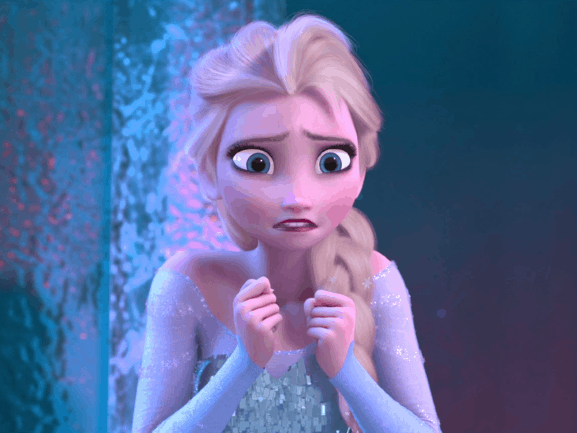
We could go on making cases for countless other Disney protagonists displaying unique character traits that call them out specifically from designated cookie cutter models. But somehow, it doesn’t seem fair to question such things as a mermaid’s desire to live among humans or having animal friends and a fairy godmother help you, or even falling into a pretty deep sleep. All the same, the fact remains that in their own individualized way each and every Disney protagonist to date displays a one-of-a-kind uniqueness and originality.

